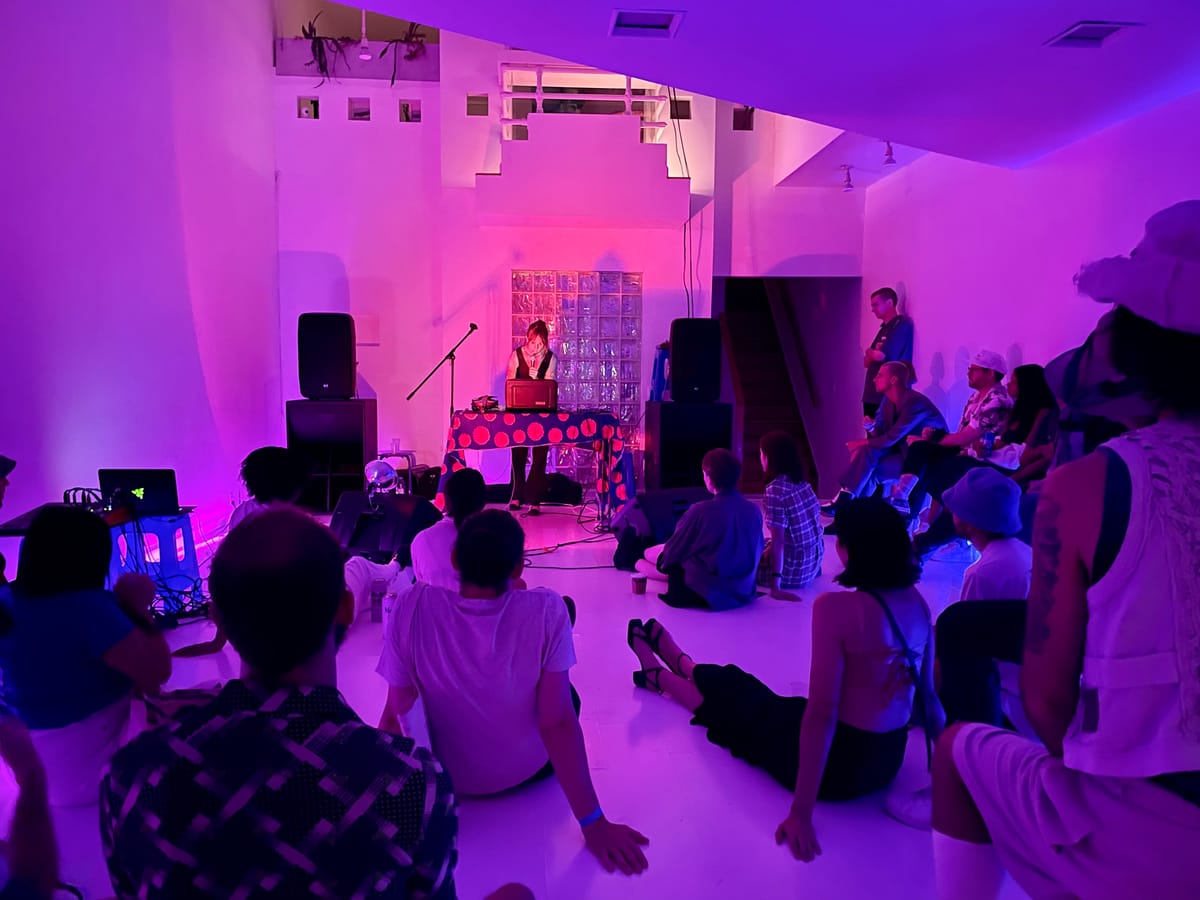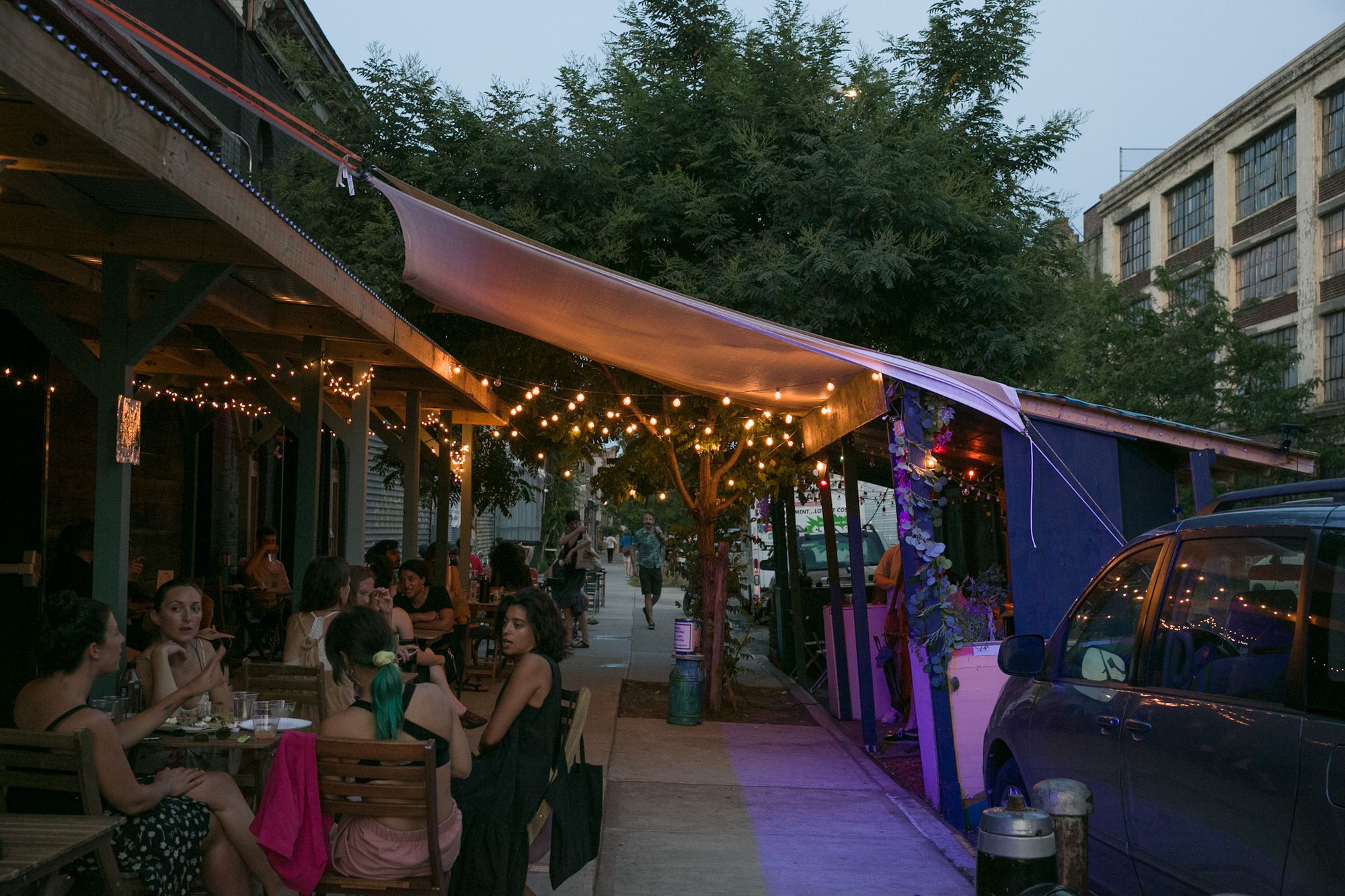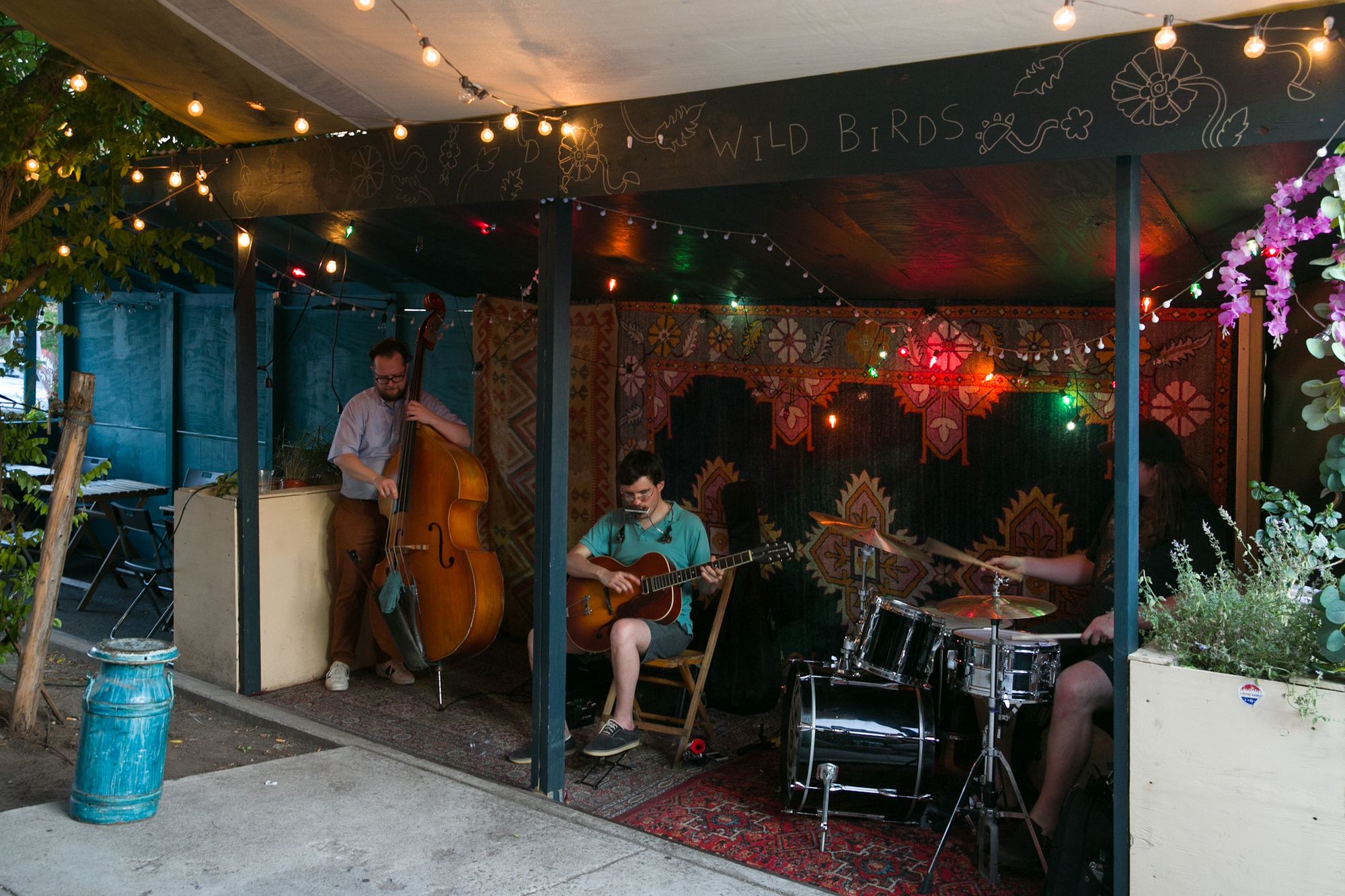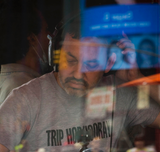Wild Birds, IRL: Two Venues That Opened During the Pandemic
IRL and Wild Birds may serve different audiences, but they share origins local arts ethics.

There is a world of differences between IRL in Greenpoint and Wild Birds in Crown Heights.
The former sits quietly in an almost nondescript row house on Franklin Street, part-gallery part-performance space, artful and choosy in the kind of work it presents, charging just a few people an old-fashioned ticket price to come and experience art and music that is transient — just like in some ways IRL is itself.
The latter takes up a rowdy Crown Heights sidewalk of a warehouse-heavy block of Dean Street just off Classon. Wild Birds is a bar with two stages (one indoor, one outdoor), presenting multiple artists a night that puts on groove-based music from around the world, whose “suggested donation” style of paying musicians is as timeworn as its desire to become a cornerstone of Brooklyn’s music landscape.
IRL and Wild Birds both opened in the middle of the pandemic and both have survived, thrived.
As Julian Klepper, the co-founder and booker of Wild Birds said to me towards the end of our conversation: “With so much darkness surrounding us, you forget how beautiful human beings can be, how music is such a beautiful soundtrack to our existence.”

IRL was born as the latest project of the creative couple, Alice Demoete and Chris Cerny (nee Cherry), European ex-pats who’ve been a part of Brooklyn’s DIY music and art scene for a decade.
Alice as an events producer/curator, making and remaking pop-up spaces for short-term arts programming, sometimes with agencies like Bobby Redd, other times with local arts organizations like Ad Hoc and venues like Market Hotel. Chris worked for one of Brooklyn’s excellent young experimental record labels (Northern Spy), did sound at the excellent Ridgewood club Trans-Pecos, and was on the team that launched The Lot Radio, an internet radio station that in its six years has become a Brooklyn music hub. Together, they’d been throwing their High Sugar Content art-meets-music parties throughout Brooklyn and Lower Manhattan at older restaurants in need of new energy, and other forgotten spaces — while also keeping an eye out for a space of their own.
The building that houses IRL has served their needs almost perfectly—even “impos[ing] its style” on the project, according to Demoete. They “fell in love” with the one-story row house, the loft space, and rooftop that most recently served as a small-business office but originally designed as a private social club.
The space they opened in September 2020 had tall white walls for visual art, a carpet for a stage, and wonderful acoustics for small-group improvised and electronic music, which is what Cerny and Demoete have booked.
The lack of a liquor license allowed for events to be considered private by the city, masks were mandatory, and “sell-outs'' were capped at 35-40 people (even post-social distancing, the maximum capacity of 80 people), with two sets a night, and a communal BYOB policy.
From the get-go, the community has been showing up, with IRL surviving the pandemic’s second wave on the strength of private events, and shows where the entire audience was made up of the artist’s friends and family. The club as a kind of clubhouse.

By contrast, the club that Julian Klepper and his Wild Birds partner Luke Bonner imagined for their community was something more traditionally in keeping with the city’s musical nightlife — even if the final context and result skewed it more radical.
Klepper is a film-maker and film teacher at the city’s public and after-school arts programs; he’d also began booking “groove-based” bands for parties he started throwing at the brownstone he lived in Bed-Stuy, some of whom (Combo Chimbita, Pinc Louds) would soon go on to recording contracts and bigger venues. Approached by a party regular to help start a venue that brought the global rhythm bookings of clubs like Barbes and Bar Lunatico into a mid-size space, he became obsessed with the project. When that party regular dropped out, he teamed up with Bonner, signed the lease on an empty space on Dean Street, and began a build-out scheduled to be completed in...March of 2020.
“That was really good timing,” Klepper says with a pronounced snicker.
The build-out did not end in March, with Klepper and many members of the construction team getting COVID, while “the whole world was crashing down.” Finally opening on July 24, 2020, Wild Birds found itself bound by the same shut-down rules as the rest of the city (no indoor music or liquor service) but also a haven in the form of its wide sidewalk, and the large outdoor dining footprint that it was allowed to occupy.
The city gave the okay to non-amplified music, and with a newly purchased stand-up piano, Wild Birds began hosting multiple sets a night. Veteran jazz, funk, reggae and Afro-Caribbean musicians suddenly not touring, played in a wooden gazebo alongside the heavily trafficked Dean Street bike lane, which presented built-in advertising of music returning to the streets.
Wild Birds’ “pass the bucket” model of paying the musicians — a model long employed by open-mic nights and piano bars — suddenly took on a different meaning, and the gig became a lifeline to many players, a few of whom still hold down residencies at Wild Birds. (The venue’s indoor stage now hosts shows as well, after 9 pm, and there are also late-night DJs.) This is club as a town hall, during a period when the real hall was closed for psychic renovations.

Demoete and Cerny call IRL “a lovely mess,” recognizing their space is a “temporary project” (they’re on a month-to-month lease) and at the mercy of the city’s development and real estate overlords. Wild Birds has 17 years left on theirs, with Klepper and Bonner having sunk, by Klepper’s estimate, “all the money we’d ever seen in our lives” into the club.
The creative intentions and audiences they serve are farther apart than the four miles that separate the two venues. Nevertheless, it is exciting to hear both invoke the needs of artists, the community’s need of artists, and the basic requirement that the community supports its artists, in how to structure their spaces. It’s the kind of localized progressive thinking that we can all use a little bit more of.





